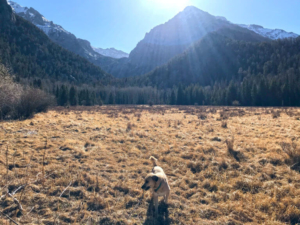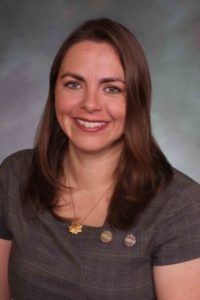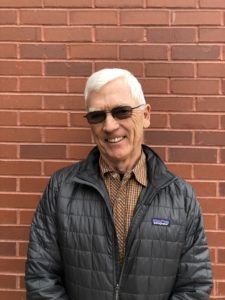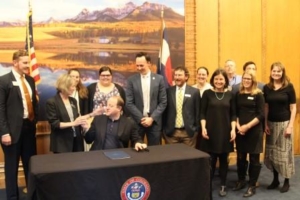Written by Jenny Gaeng
Saturday, May 18 is Colorado Public Lands Day. Like the best holidays, it’s not just a day; it’s a mission.
Eight years ago, I lay in a meadow under the stars, sea-level lungs aching after the climb, and gazed at the unimpeded Milky Way. At the edge of the Sangre de Cristo Wilderness, the galaxy smeared across the sky as if someone dipped their finger in chalk and trailed the color through space and time. For the first time, I saw myself in the context of everything, thanks to our public lands.

Koda, Organizer Jenny Gaeng’s dog, in the Sangre de Cristo Wilderness.
Year after year, I returned to the Sangre de Cristos. I canoed to a waterfall in a glacial lake, learned to spot wild raspberries, climbed a fourteener and tearfully spat that I would never do it again (then I did it again). I brought guest after guest to the meadow of my metaphysical baptism: my mom, my friends, a once-true love, a random Tinder date. I presented the land and the lake as if I owned them, chatting proudly about weather and geology. Yes, the Sangre de Cristos were mine; they belonged to all of us, as public lands do. It seemed uncomplicated.
My story isn’t unique, nor is the fact that it’s one colored by privilege.
I started to research the history of the area. I learned that the Southern Ute camped and traveled in the Sangres, hunting elk and gathering roots and seeds for medicine. I read the dramatic crest of the mountains served as a fortress against invasions — before the Spanish found their way in from the south. I found out that “Blanca Peak” is another name for Sisnaajiní, the sacred eastern boundary of the Navajo homeland; today, the tribe still fights to protect this area from oil and gas drilling operations.

Front Range Field Organizer Jenny Gaeng.
Millions of people visit Colorado’s public lands every year to hike, climb, ski, hunt, fish, and maybe have a life-changing experience as I did. And like me, the vast majority of visitors are white — nearly 95% of visitors to Forest Service lands self-identified that way during monitoring from 2010-2014. The disparity between racial demographics and National Forest visitors in Colorado ranges from 30-70%.
The roots of this fact are not a mystery. The United States has an established history of white supremacy that is set up, protected, and perpetuated by racist policies across our economy, government, and the systems these institutions create.
“Public lands for all,” we say. But you can’t just tell someone they own a locked building and expect them to find a way inside; everyone needs a key. I was lucky enough to be handed one.

On the ridge to Sisnaajiní , renamed and known now as Blanca Peak, in the Sangre de Cristo Wilderness. The colonial practice of “discovering” and renaming landscapes erases the indigenous history of our lands and continues throughout the modern era.
Representation, marketing, and centers of outdoor recreation help cultivate a homogenous outdoor culture. It’s personified by being thin, fit, and clad in expensive gear; it’s predominantly male, cis, heterosexual, and hinges on the knowledge to survive and thrive in the wilderness. It’s what we see on the cover of Outside Magazine and it’s what we see on trails throughout Colorado. Coloradans that identify as nonwhite can hike for days in the Colorado backcountry without seeing a face that looks like theirs.
And that brings me to my mission — to our mission.

Gazing down at the Sangre de Cristo Wilderness.
Outdoor adventurers and activists of all races, genders, and backgrounds are upping the representation game and inspiring new generations. You should pay more attention to their words and ideas than mine, and Conservation Colorado will be featuring their voices in the lead-up to Public Lands Day. Let’s talk about it. Let’s raise their stories as high as Mt. Elbert!
We love our public lands in Colorado. We love them enough to fight for them, which is the reason Colorado Public Lands Day exists. We love them enough that we’ll never stop trying to make them the best they can be — which means looking critically at our history, and shaping our future to be more inclusive and representative of all Coloradans.
We have to work together. I’m never sure of the way forward, and I’m bound to say the wrong thing or screw up at some point — we all are.
As Teresa Baker said in a recent episode of the Safety Third podcast, “Rebranding the Outdoors: “This is going to feel inauthentic as hell — because it hasn’t been done…push your fears aside about it not feeling authentic because that’s just where we are.”
If I can climb Crestone Needle and cross the Conejos River in the spring snowmelt, I think I can learn more about what it takes to make public lands truly representative and open to all people. I think you can, too.















